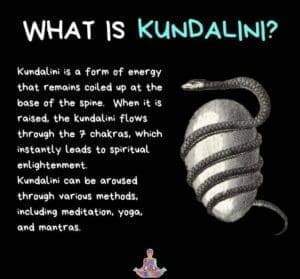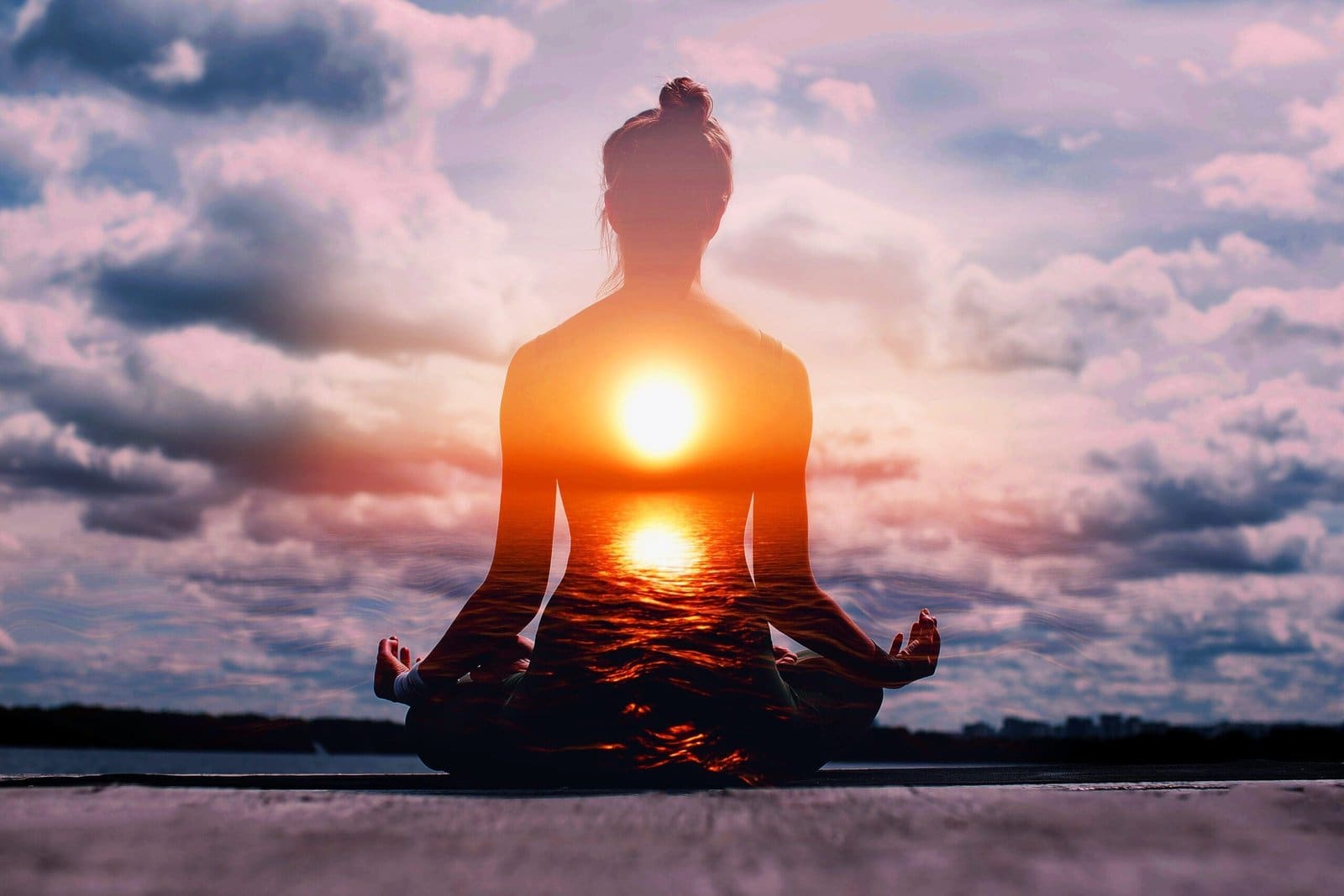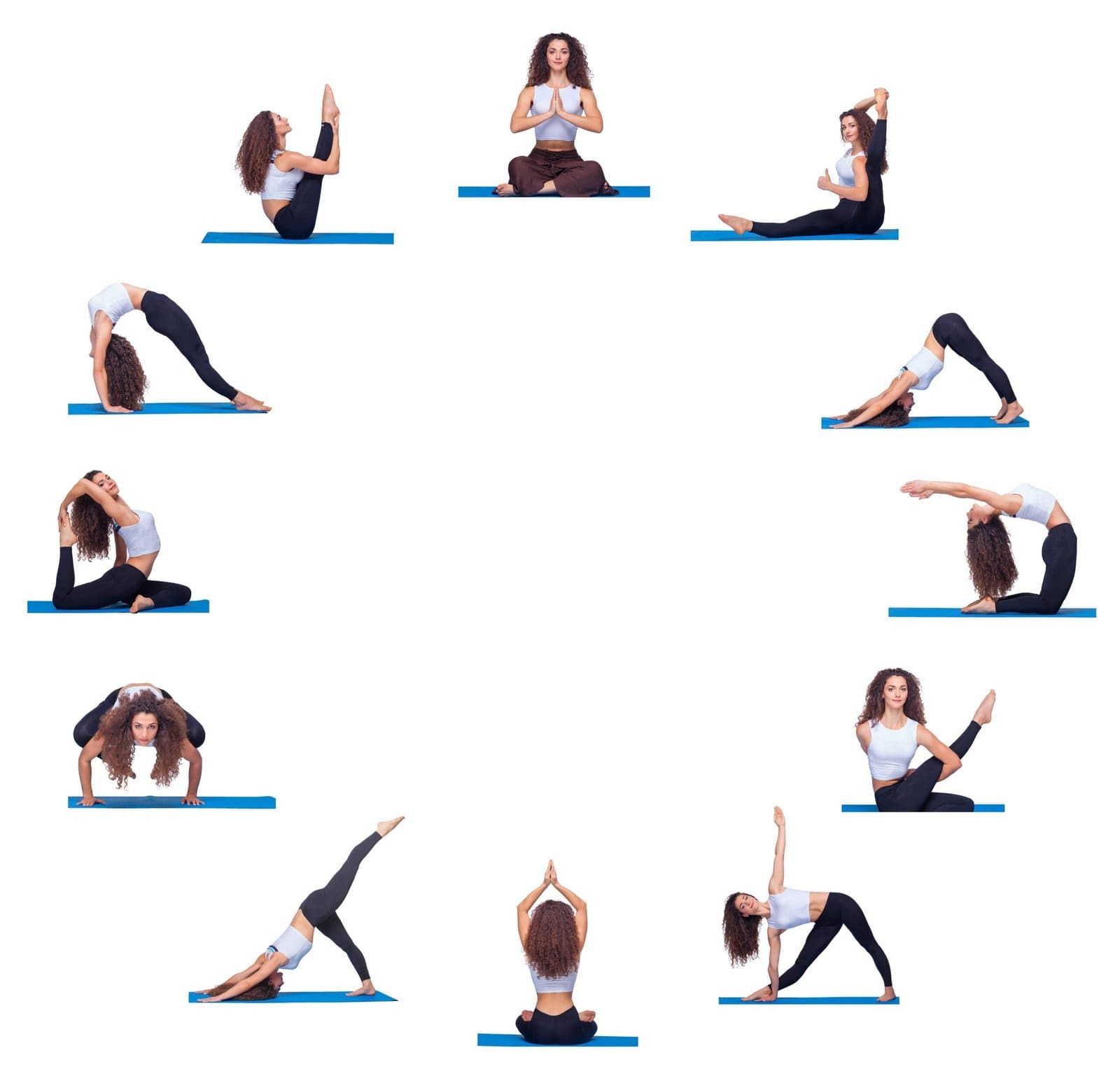The Power of Kundalini Yoga: Transforming Mind, Body, and Spirit
Are you looking to unlock the full potential of your mind, body, and spirit? Look no further than Kundalini Yoga. This ancient practice, rooted in the teachings of Tantra, holds the power to awaken the dormant energy within you, known as Kundalini. With its unique combination of physical postures, breathwork, chanting, and meditation, Kundalini Yoga offers a transformative journey like no other. By harnessing the energy at the base of your spine and guiding it upwards through the chakras, Kundalini Yoga can help you release blockages, balance your emotions, and tap into a deep sense of inner peace and clarity. Whether you’re seeking physical healing, emotional wellbeing, or spiritual growth, Kundalini Yoga has the potential to revolutionize your life. Join the millions of individuals around the world who have embraced this powerful practice and experience the profound benefits it has to offer. Get ready to embark on a journey of self-discovery, empowerment, and transformation with Kundalini Yoga.
Understanding the Kundalini energy
Kundalini is often described as a coiled serpent lying dormant at the base of the spine. This powerful energy, when awakened, rises through the seven chakras, unlocking a multitude of benefits along the way. The practice of Kundalini Yoga aims to activate and balance this energy, allowing it to flow freely through the body.
Kundalini energy is said to be the source of our life force, creativity, and spiritual awakening. When awakened, it can bring about profound changes in our physical, mental, and emotional well-being. It helps us tap into our inner power, intuition, and higher consciousness, leading to a deeper connection with ourselves and the world around us.
Benefits of practicing Kundalini Yoga
The practice of Kundalini Yoga offers a wide range of benefits that extend beyond the physical realm. Regular practice can help improve flexibility, strength, and overall physical health. It can also enhance mental clarity, focus, and emotional stability.
One of the unique aspects of Kundalini Yoga is its ability to release blocked energy and emotions. By consciously moving the Kundalini energy through the chakras, practitioners can experience a sense of emotional release and purification. This can lead to a greater sense of inner peace, emotional balance, and a release of past traumas or limiting beliefs.
Moreover, Kundalini Yoga is known for its ability to awaken our dormant potential and expand our consciousness. It can help us tap into our innate creativity, intuition, and spiritual connection. Through regular practice, we can experience a profound sense of self-discovery, empowerment, and transformation.
Kundalini Yoga poses and sequences
Kundalini Yoga incorporates a wide range of physical postures, known as asanas, which are specifically designed to activate and balance the energy centers in the body. These postures are often combined into dynamic sequences called kriyas, which target specific areas or aspects of the body and mind.
Each Kundalini Yoga pose and sequence has a specific purpose and effect on the body and energy system. Some poses focus on strengthening the nervous system, while others stimulate digestion or increase the flow of energy through the spine. By practicing these poses and sequences, we can experience a profound sense of physical, mental, and energetic alignment.
Incorporating breathwork and meditation in Kundalini Yoga
Breathwork, known as pranayama, is an integral part of Kundalini Yoga practice. Conscious breathing techniques help regulate the flow of energy and oxygen in the body, enhancing our vitality and awareness. Specific breathwork exercises, such as the Breath of Fire or alternate nostril breathing, can be practiced to activate and balance the Kundalini energy.
Meditation is another essential component of Kundalini Yoga. Through various meditation techniques, such as mantra repetition or silent contemplation, we can quiet the mind and cultivate a deep sense of inner stillness and awareness. Meditation allows us to connect with our higher self and align with the universal consciousness.
Kundalini Yoga for physical and mental health
The practice of Kundalini Yoga offers numerous physical and mental health benefits. The physical postures and sequences help increase flexibility, improve strength, and promote overall well-being. Regular practice can also help alleviate chronic pain, improve cardiovascular health, and boost the immune system.
In terms of mental health, Kundalini Yoga is known to reduce stress, anxiety, and depression. The combination of physical movement, breathwork, and meditation helps calm the nervous system and promote a state of deep relaxation. It also helps cultivate mental clarity, focus, and emotional stability, leading to improved mental and emotional well-being.
Kundalini Yoga for spiritual growth and self-discovery
Kundalini Yoga is a potent tool for spiritual growth and self-discovery. Through the awakening and balancing of the Kundalini energy, we can access higher states of consciousness and tap into our spiritual potential. The practice helps us connect with our true essence, expand our awareness, and deepen our understanding of ourselves and the world around us.
As we progress on our Kundalini Yoga journey, we may experience moments of spiritual insight, profound inner peace, and a deep sense of interconnectedness with all beings. The practice can also help us uncover and release deep-seated patterns, beliefs, and traumas that may be holding us back from living our fullest and most authentic lives.
Kundalini Yoga and chakra balancing
The chakras, or energy centers, play a vital role in Kundalini Yoga. As the Kundalini energy rises through the spine, it activates and balances each of the seven chakras, bringing about a state of harmony and alignment. Each chakra corresponds to specific physical, emotional, and spiritual qualities.
By practicing Kundalini Yoga, we can consciously work with the chakras to remove blockages and restore balance. This can lead to a greater flow of energy, improved health, and enhanced overall well-being. Balancing the chakras also helps us access and integrate the qualities associated with each energy center, such as love, power, creativity, and intuition.
Kundalini Yoga for stress relief and emotional well-being
In today’s fast-paced world, stress and emotional turmoil have become all too common. Kundalini Yoga offers effective tools for stress relief and emotional well-being. The combination of physical movement, breathwork, and meditation helps calm the mind, release tension, and promote relaxation.
Specific Kundalini Yoga practices, such as the “Kirtan Kriya” meditation, have been scientifically proven to reduce stress and improve cognitive function. These practices can also help regulate emotions, enhance self-awareness, and promote a sense of emotional balance and resilience.
Kundalini Yoga resources and classes
To embark on your Kundalini Yoga journey, there are various resources and classes available. Numerous books, online courses, and instructional videos provide guidance on Kundalini Yoga practice. It is essential to find a qualified teacher or instructor who can guide you through the practice and ensure your safety and progress.
In addition to in-person classes, there are also online communities and forums where you can connect with fellow practitioners and seek support and guidance. These resources can provide inspiration, deepen your understanding of Kundalini Yoga, and offer a sense of community as you embark on this transformative journey.
Conclusion
Kundalini Yoga holds immense potential for transforming mind, body, and spirit. With its unique combination of physical postures, breathwork, chanting, and meditation, it offers a powerful path to self-discovery, empowerment, and inner transformation. By awakening the dormant Kundalini energy, we can tap into our full potential, release blockages, and experience profound physical, mental, and spiritual benefits. Whether you’re seeking physical healing, emotional well-being, or spiritual growth, Kundalini Yoga has the potential to revolutionize your life. Embrace this ancient practice and embark on a journey of self-discovery, empowerment, and transformation with Kundalini Yoga.
Disclaimer
The content is purely informative and educational in nature and should not be construed as medical advice. Please use the content only in consultation with an appropriate certified medical or healthcare professional

Unlocking Your Spiritual Side with 6 Kundalini Yoga Techniques
Understanding Kundalini Yoga Discover the transformative power of Kundalini yoga as you embark on a journey to unlock your spiritual side. In this article, you will explore six techniques that will guide you towards a deeper understanding of yourself and the universe. Through breathwork, movement, and meditation, you will learn how to awaken the dormant energy within you, leading to a profound spiritual awakening. Get ready to embark on a transformative journey as you embrace the ancient wisdom of Kundalini yoga and tap into your true potential. What is Kundalini Yoga? Kundalini Yoga is a powerful practice that combines physical postures, breathing techniques, meditation, chanting, and mantras to awaken the dormant spiritual energy within you. The word “kundalini” refers to the coiled energy at the base of your spine, and the aim of Kundalini Yoga is to uncoil that energy and allow it to rise up through the body, activating and aligning the seven energy centers, or chakras. The History of Kundalini Yoga Kundalini Yoga has a rich history that dates back thousands of years. It originated in ancient India and was kept secret and passed down orally from teacher to student. It was not until the late 1960s that Kundalini Yoga was brought to the West by Yogi Bhajan. Yogi Bhajan taught that Kundalini Yoga is a practice for householders – people living in the modern world – to awaken their true potential and create a sense of balance, clarity, and elevation in their everyday lives. Benefits of Kundalini Yoga Kundalini Yoga offers a wide range of benefits for your physical, mental, and emotional well-being. Regular practice can help increase your energy levels, reduce stress and anxiety, improve flexibility and strength, enhance concentration and focus, and promote deep relaxation and restful sleep. It can also boost your immune system, balance your hormones, and improve your overall vitality. Kundalini Yoga is known for its transformative power, helping you connect with your inner self and tap into your higher consciousness. Preparing for Kundalini Yoga Choosing a Kundalini Yoga Teacher When embarking on your Kundalini Yoga journey, it’s important to find a qualified and experienced teacher who resonates with your energy and teaching style preference. Look for a teacher who has completed teacher training specifically in Kundalini Yoga and who has a deep understanding of the practice. A good teacher will guide you safely, provide individualized support, and inspire you on your path. Finding a Suitable Practice Space Creating a conducive environment for Kundalini Yoga is essential to fully immerse yourself in the practice. Find a quiet and clean space in your home where you can practice without distractions. Ideally, the space should be well-ventilated, free of clutter, and have enough room for you to move around comfortably. Consider decorating your practice area with inspiring images, plants, or crystals to enhance the positive energy flow. Gathering the Necessary Equipment To practice Kundalini Yoga, you don’t need much equipment. The essentials include a comfortable yoga mat or rug to cushion your body during physical postures and a meditation cushion or blanket to support your seated meditation practice. It can also be helpful to have a bolster or yoga blocks for additional support, especially if you have physical limitations. Wear loose, breathable clothing that doesn’t restrict your movement, and have a water bottle nearby to stay hydrated throughout the practice. Kundalini Yoga Techniques Breathing Exercises (Pranayama) Breathing exercises, or pranayama, are an integral part of Kundalini Yoga. They help regulate your energy, calm the mind, and connect with your inner self. One common pranayama technique in Kundalini Yoga is the Breath of Fire, which involves rapid, rhythmic inhales and exhales through the nose. This technique ignites the fire within, clears the subconscious mind, and fuels the energy flow throughout the body. Physical Postures (Asanas) Physical postures, or asanas, in Kundalini Yoga are designed to strengthen the body and balance the energy centers. They typically involve dynamic movements, stretching, and holding poses in conjunction with specific breath patterns. Each asana targets different areas of the body and has specific benefits for physical and energetic alignment. Examples of Kundalini Yoga asanas include the Cobra Pose, the Archer Pose, and the Bow Pose. Chanting and Mantras Chanting and reciting mantras are powerful tools in Kundalini Yoga to create vibrational shifts and connect with the divine energy. Mantras are sacred sounds, words, or phrases that have been used for centuries to evoke specific qualities and states of consciousness. The most famous mantra in Kundalini Yoga is “Sat Nam,” which means “truth is my identity.” Regular chanting and mantra repetition can help awaken your inner truth, elevate your awareness, and bring clarity and focus to your mind. Meditation Meditation is a cornerstone of Kundalini Yoga, allowing you to quiet the mind, deepen your awareness, and experience a sense of unity with the universe. Kundalini meditations often involve the use of breath, visualization, mantra repetition, or focusing on specific energy centers or chakras. Through regular meditation practice, you can experience profound stillness, expanded consciousness, and a deeper connection to your higher self. Kriyas Kriyas are complete sequences of Kundalini Yoga exercises designed to target specific aspects of physical, mental, and energetic well-being. Each kriya is carefully curated to create a specific effect and may include a combination of asanas, pranayama, chanting, and mudras. Practicing kriyas helps cleanse and balance the body, strengthen the nervous system, and stimulate the flow of Kundalini energy. Using Mudras Mudras are hand gestures or positions used to channel and direct energy within the body. They are often incorporated into Kundalini Yoga practice to intensify the energetic effects of asanas, pranayama, or meditation. Each mudra has a different purpose and effect, such as promoting clarity, activating specific chakras, or balancing the elements within you. Some common mudras in Kundalini Yoga include Gyan Mudra (connecting with wisdom) and Shuni Mudra (bringing patience). Safely Initiating Kundalini Awakening Understanding the Risks and Possible Side Effects Kundalini awakening is a transformative process that can have profound effects on your

Unlocking Your Spiritual Side with 6 Kundalini Yoga Techniques
Discover the transformative power of Kundalini yoga as you embark on a journey to unlock your spiritual side. In this article, you will explore six techniques that will guide you towards a deeper understanding of yourself and the universe. Through breathwork, movement, and meditation, you will learn how to awaken the dormant energy within you, leading to a profound spiritual awakening. Get ready to embark on a transformative journey as you embrace the ancient wisdom of Kundalini yoga and tap into your true potential. Understanding Kundalini Yoga What is Kundalini Yoga? Kundalini Yoga is a powerful practice that combines physical postures, breathing techniques, meditation, chanting, and mantras to awaken the dormant spiritual energy within you. The word “kundalini” refers to the coiled energy at the base of your spine, and the aim of Kundalini Yoga is to uncoil that energy and allow it to rise up through the body, activating and aligning the seven energy centers, or chakras. The History of Kundalini Yoga Kundalini Yoga has a rich history that dates back thousands of years. It originated in ancient India and was kept secret and passed down orally from teacher to student. It was not until the late 1960s that Kundalini Yoga was brought to the West by Yogi Bhajan. Yogi Bhajan taught that Kundalini Yoga is a practice for householders – people living in the modern world – to awaken their true potential and create a sense of balance, clarity, and elevation in their everyday lives. Benefits of Kundalini Yoga Kundalini Yoga offers a wide range of benefits for your physical, mental, and emotional well-being. Regular practice can help increase your energy levels, reduce stress and anxiety, improve flexibility and strength, enhance concentration and focus, and promote deep relaxation and restful sleep. It can also boost your immune system, balance your hormones, and improve your overall vitality. Kundalini Yoga is known for its transformative power, helping you connect with your inner self and tap into your higher consciousness. Preparing for Kundalini Yoga Choosing a Kundalini Yoga Teacher When embarking on your Kundalini Yoga journey, it’s important to find a qualified and experienced teacher who resonates with your energy and teaching style preference. Look for a teacher who has completed teacher training specifically in Kundalini Yoga and who has a deep understanding of the practice. A good teacher will guide you safely, provide individualized support, and inspire you on your path. Finding a Suitable Practice Space Creating a conducive environment for Kundalini Yoga is essential to fully immerse yourself in the practice. Find a quiet and clean space in your home where you can practice without distractions. Ideally, the space should be well-ventilated, free of clutter, and have enough room for you to move around comfortably. Consider decorating your practice area with inspiring images, plants, or crystals to enhance the positive energy flow. Gathering the Necessary Equipment To practice Kundalini Yoga, you don’t need much equipment. The essentials include a comfortable yoga mat or rug to cushion your body during physical postures and a meditation cushion or blanket to support your seated meditation practice. It can also be helpful to have a bolster or yoga blocks for additional support, especially if you have physical limitations. Wear loose, breathable clothing that doesn’t restrict your movement, and have a water bottle nearby to stay hydrated throughout the practice. Kundalini Yoga Techniques Breathing Exercises (Pranayama) Breathing exercises, or pranayama, are an integral part of Kundalini Yoga. They help regulate your energy, calm the mind, and connect with your inner self. One common pranayama technique in Kundalini Yoga is the Breath of Fire, which involves rapid, rhythmic inhales and exhales through the nose. This technique ignites the fire within, clears the subconscious mind, and fuels the energy flow throughout the body. Physical Postures (Asanas) Physical postures, or asanas, in Kundalini Yoga are designed to strengthen the body and balance the energy centers. They typically involve dynamic movements, stretching, and holding poses in conjunction with specific breath patterns. Each asana targets different areas of the body and has specific benefits for physical and energetic alignment. Examples of Kundalini Yoga asanas include the Cobra Pose, the Archer Pose, and the Bow Pose. Chanting and Mantras Chanting and reciting mantras are powerful tools in Kundalini Yoga to create vibrational shifts and connect with the divine energy. Mantras are sacred sounds, words, or phrases that have been used for centuries to evoke specific qualities and states of consciousness. The most famous mantra in Kundalini Yoga is “Sat Nam,” which means “truth is my identity.” Regular chanting and mantra repetition can help awaken your inner truth, elevate your awareness, and bring clarity and focus to your mind. Meditation Meditation is a cornerstone of Kundalini Yoga, allowing you to quiet the mind, deepen your awareness, and experience a sense of unity with the universe. Kundalini meditations often involve the use of breath, visualization, mantra repetition, or focusing on specific energy centers or chakras. Through regular meditation practice, you can experience profound stillness, expanded consciousness, and a deeper connection to your higher self. Kriyas Kriyas are complete sequences of Kundalini Yoga exercises designed to target specific aspects of physical, mental, and energetic well-being. Each kriya is carefully curated to create a specific effect and may include a combination of asanas, pranayama, chanting, and mudras. Practicing kriyas helps cleanse and balance the body, strengthen the nervous system, and stimulate the flow of Kundalini energy. Using Mudras Mudras are hand gestures or positions used to channel and direct energy within the body. They are often incorporated into Kundalini Yoga practice to intensify the energetic effects of asanas, pranayama, or meditation. Each mudra has a different purpose and effect, such as promoting clarity, activating specific chakras, or balancing the elements within you. Some common mudras in Kundalini Yoga include Gyan Mudra (connecting with wisdom) and Shuni Mudra (bringing patience). Safely Initiating Kundalini Awakening Understanding the Risks and Possible Side Effects Kundalini awakening is a transformative process that can have profound effects on your









